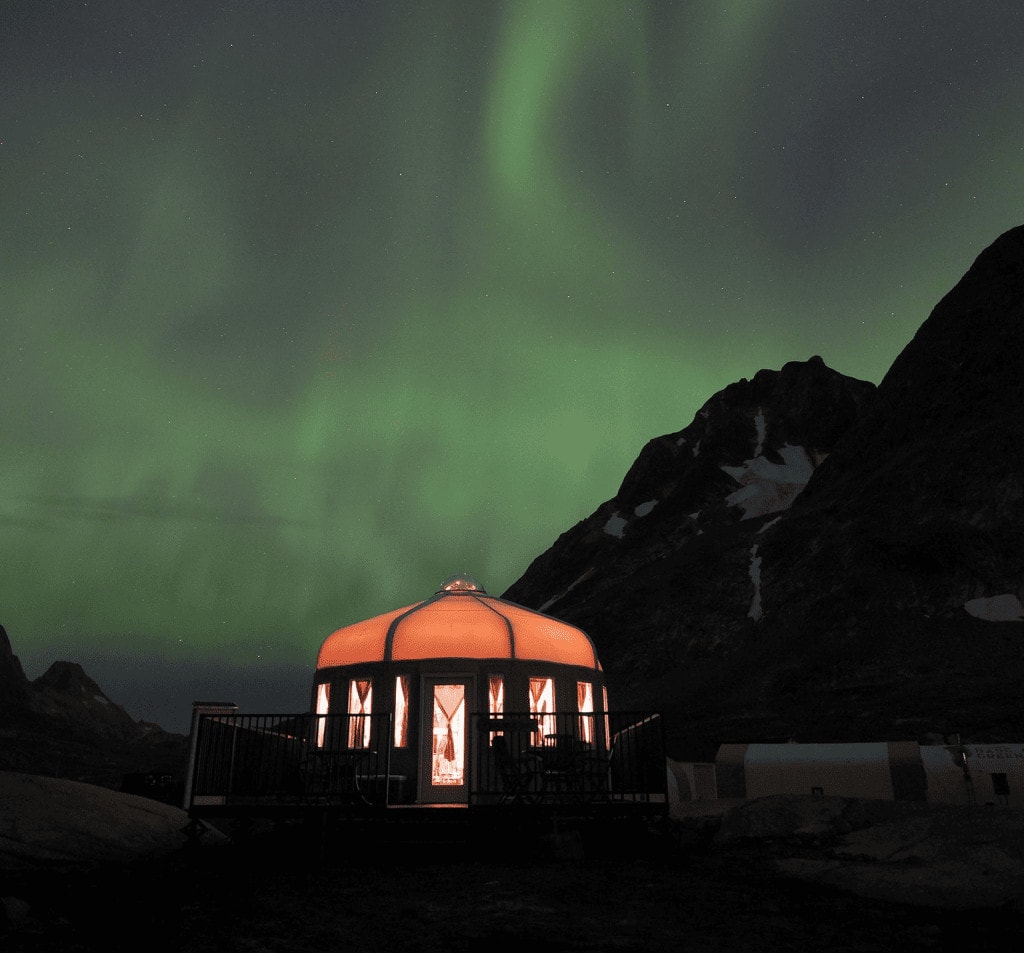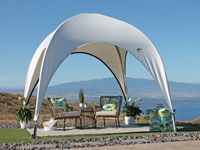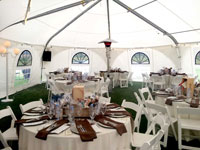Yurts have taken off around the world as a popular option for glamping. When it comes to determining what type of yurt to go with, both wood and steel are common choices. Here’s what you need to know about each type of yurt when making your decision.
Aesthetics of Wood vs. Steel-Framed Yurts
Many yurts are set up in the middle of nature, far from neighbors or anyone else. So why do aesthetics matter?
The look and feel of your yurt is essential to the glamping experience, an experience that is meant to promote relaxation and joy. This is important to consider whether you’re interested in a yurt for yourself or for a campground or Airbnb (and especially so for the latter, as potential visitors will base their decisions largely on photos of your yurts).
Both wood and steel yurts invoke the surreal feeling that comes with knowing you’re staying in a type of structure that has been around for thousands of years. However, while wood yurts have more of a rustic look and feel, steel yurts such as those high-quality WeatherPort® outdoor event facility from Alaska Structures®, feature a modern yurt design.
Another thing to keep in mind is that most wood yurts are made with a wood lattice, which lines the inside of the exterior walls and sometimes even covers the windows. If the aesthetics of this diamond cross structure aren’t pleasing to you, or you want to have regular windows without having to pay more for the upgrade, a steel-framed yurt may be a better choice.
[Related: Why You Should Consider Yurts for Vacation Rentals]
Customization Options for Wood vs. Steel Yurts
The best way to completely customize your yurt is to build it from scratch. However, doing so requires carpentry skills, so most people purchase prefabricated yurt kits designed for easy assembly.
Both wood and steel yurt kits come with customization options, so pay specific attention to the options listed and carefully consider your needs. Also be aware that wood and steel yurts may have the same customization options, but at very different price points.
Ease and Efficiency of Setup for Wood vs. Steel-Framed Yurts
Most yurt companies advertise their yurts as being easy to set up, yet the difficulty level to set up still varies widely from one yurt to the next. Look out for specific details to get a better idea of just how easy setup will be.
Setup starts with shipping. While both wood and steel yurt companies often offer shipping, options usually aren’t the same. For instance, yurts from WeatherPort pack small for low-cube shipping, making delivery both more affordable and more efficient. This same benefit may also make it easier to deliver WeatherPort yurts to remote locations, as they can be air-freighted if necessary. Some wood yurts, on the other hand, require you to choose an alternate delivery address or pick up the yurt yourself if your site is not accessible by a semi-truck.
Foundation requirements are another consideration. Many wood yurts have strict foundation requirements, and some even require you to construct a circular wood platform for the yurt. WeatherPort saves you this time and effort by designing its yurts to work with alternative anchoring options, so you can safely anchor your yurt directly into level ground.
Durability of Wood vs. Steel Yurts
Many wood and steel yurts alike can last for decades, but their longevity is often dependent on the level of care and the climate that they’re in.
For example, wood yurts often require different types of maintenance for their different parts (the cover, windows, doors, and skylight), including regular cleaning for certain types of covers to prevent mildew growth. WeatherPort yurts are virtually maintenance-free once set up, and WeatherPort architectural membranes are both mildew- and mold-resistant.
Additionally, WeatherPort structures are engineered to meet the customer’s exact specifications for snow and wind loads, performance needs, and ground conditions. Our steel-framed structures are engineered to last in harsh climates with temperatures as extreme as -80 ̊ F and +130 ̊ F.
Ability to Relocate Wood vs. Steel-Framed Yurts
The only thing better than getting to enjoy the beauty of nature in a yurt is the ability to relocate that yurt, so as to enjoy even more beautiful spots.
Fortunately, many steel and wood yurts are portable, but the same considerations for shipping and setup come into play here. For instance, bulkier wood yurts may be more difficult to relocate than low-cube steel-framed yurts, especially if you’re transporting them yourself.
Keep in mind that the platform you build for a wood yurt will also need to be taken apart, transported, and then rebuilt at the new location. Being able to secure your steel-framed yurt directly to the ground gives you one less thing to worry about when relocating.
All in all, wood yurts tend to be less portable than steel-framed yurts, even if relocating them is technically possible.
Eco-friendliness of Wood vs. Steel Yurts
Structures designed to help people enjoy nature shouldn’t harm nature in the process, so anyone considering a yurt should take eco-friendliness into account.
Consider the concept of leaving no trace, or creating as little environmental footprint as possible. From this point of view, being able to anchor the yurt directly to the ground with minimal site preparation is ideal. Laying a foundation — whether using a wood platform, concrete, or something else — creates a much bigger impact on the surrounding environment.
[Related: Remote Construction, Low Environmental Impact]
Wood and steel-framed yurts may look fairly similar, but their subtle distinctions make a big difference. Be sure to consider all of these aspects to ensure that your happiness lasts as long as your yurt does!
WeatherPort® is a brand of high-quality fabric buildings from Alaska Structures®. If you are interested in learning more about our fabric buildings and remote camp systems please contact us by calling +1-907-344-1565 or completing our online form to request a consultation.For more information about WeatherPort yurts or our other building solutions, feel free to contact us using the following:

















































































Leave a Reply